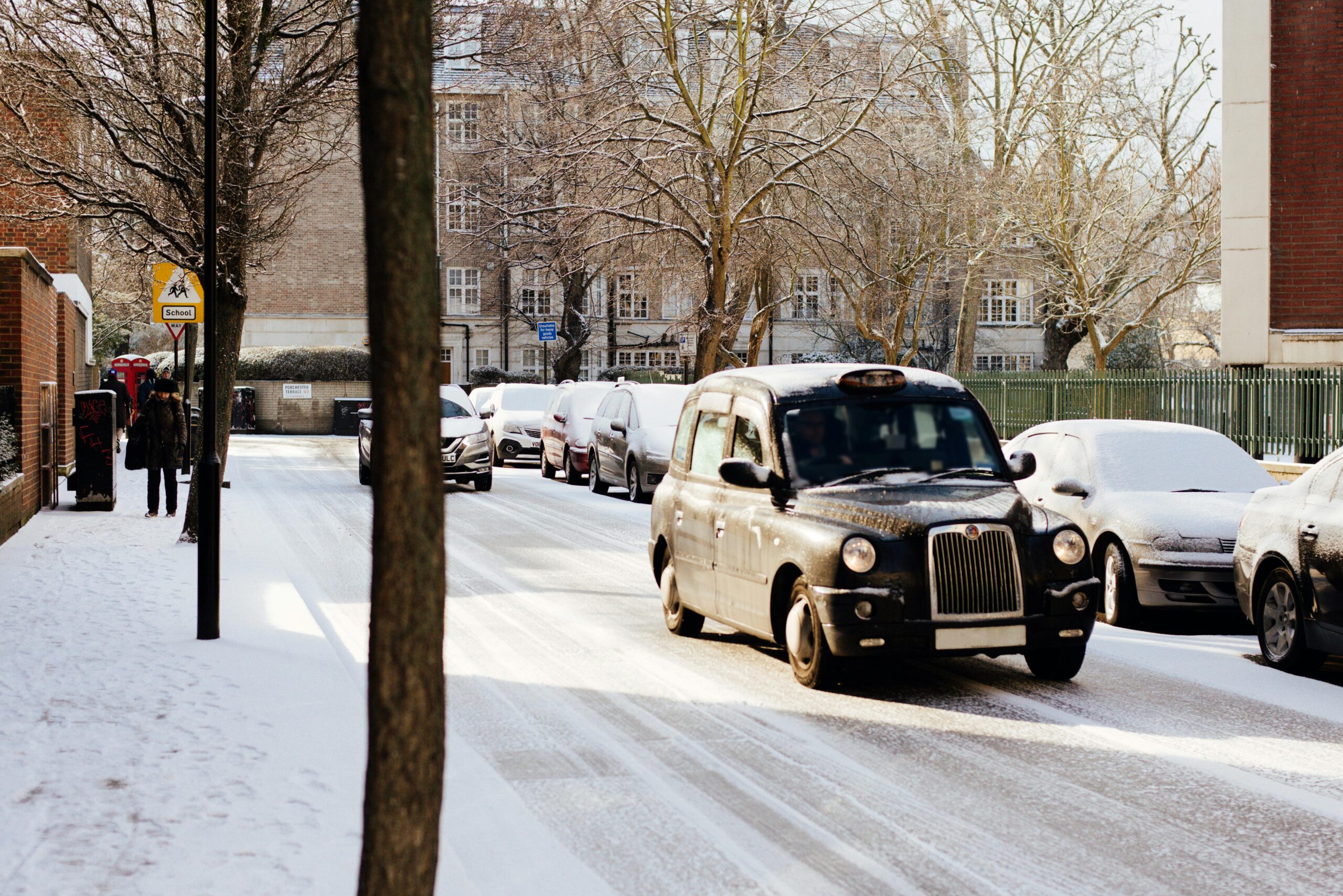When it comes to weather in Sheffield, England, many people often wonders what makes this city’s climate so unique and unpredictable. Sheffield, known for its lush greenery and vibrant culture, experiences a fascinating blend of weather patterns that can surprise even the most seasoned travellers. Have you ever asked yourself, “What is the best time to visit Sheffield for pleasant weather?” The answer might not be as straightforward as you think, because the city is famous for its sudden changes in temperature and frequent rainfall. From chilly winters with occasional snow to mild summers filled with sunshine, Sheffield’s weather offers something for everyone. Are you curious about how Sheffield’s climate affects outdoor activities or local events? Whether you’re planning a hiking trip in the nearby Peak District or exploring the city’s historic sites, knowing the seasonal weather trends in Sheffield can make all the difference. In addition, understanding the impact of climate change on Sheffield’s weather patterns has become a hot topic recently, sparking many discussions online. So, what should you pack for your Sheffield adventure? Stay tuned to discover essential weather tips and the latest forecasts that will help you enjoy your visit to this charming English city to the fullest.
Unveiling Sheffield’s Weather Patterns: 7 Surprising Climate Facts You Didn’t Know
Sheffield, England, is one of those cities where the weather in Sheffield England can be as moody as a cat on a rainy day. Honestly, if you planning a visit or you live there, you probably notice the weather changes more frequently than the seasons themselves. It’s like one minute, the sun is out shining bright, and the next, it’s chucking it down with rain. Not really sure why this matters, but locals often joke about carrying an umbrella and sunglasses at the same time—because you never know!
Let’s have a look at some average temperature and rainfall data for Sheffield, for those who love a bit of numbers with their weather talk.
| Month | Average High (°C) | Average Low (°C) | Rainfall (mm) |
|---|---|---|---|
| January | 6 | 0 | 55 |
| April | 12 | 4 | 43 |
| July | 21 | 12 | 45 |
| October | 13 | 6 | 75 |
So, July might sounds warm, but don’t get too excited. Sheffield seldom sees the blazing heat like southern parts of England does. Maybe it’s just me, but I feel like the rain is a constant companion here, especially in the autumn months. The weather in Sheffield England tends to be unpredictable, and sometimes its like the clouds just wont stop weeping.
One thing you should know is that Sheffield sits close to the Peak District, which means the surrounding hills influence the local climate quite a bit. The hills can trap cold air in the winter, making the nights feel colder than you would expect. In the summer, they can bring sudden showers that catch you off guard, especially if you’re out for a countryside walk. Here’s a quick rundown of what you might expect throughout the year:
- Spring: Mild temperatures but expect showers, sometimes heavy. The flowers might bloom, but they don’t care about your picnic plans.
- Summer: Warm-ish, but still quite wet. Don’t leave the raincoat at home.
- Autumn: Windy and wet mostly, with leaves falling and the weather turning quite gloomy.
- Winter: Cold and damp, with occasional snow but not always guaranteed.
Alright, now you might be wondering about the sunshine hours. How much sun Sheffield really gets? Let’s do a little table on that.
| Season | Average Sunshine Hours per Day |
|---|---|
| Spring | 4.5 |
| Summer | 6.5 |
| Autumn | 3.5 |
| Winter | 1.5 |
Not exactly a sun-lover’s paradise then, is it? But hey, the greenery in Sheffield is lush, probably because of all the rain it receives! If you’re into gardening or just a fan of green parks, the weather in Sheffield England is actually pretty good for that.
Now, if you’re planning on visiting Sheffield, it’s advisable to pack smart. Here’s a quick checklist I made, which might help you avoid some weather-related disasters:
- Waterproof jacket (preferably one that breathes, because it can get humid)
- Umbrella (small and sturdy, because the wind can turn it inside out)
- Layers of clothes (temperatures can changes quickly)
- Waterproof shoes or boots (muddy parks aren’t just a myth)
- Sunglasses (for those rare sunny days)
Something funny I’ve noticed is how locals talk about the weather like it’s a personal enemy. You’ll hear phrases like “Typical Sheffield, raining again!” or “I swear the clouds follow me everywhere.” Maybe it’s the unpredictability that makes the weather a daily topic for chit-chat.
By the way, if you’re interested in some more detailed data, here is a rough breakdown of average monthly rainfall days in Sheffield:
| Month | Rain Days (approx.) |
|---|---|
| January | 15 |
| April | 12 |
| July | 10 |
| October | 16 |
So you see, it rains more often than not. And it doesn’t usually rain cats and dogs, but more like a constant drizzle that soaks you if you aren’t prepared.
Another interesting point is the wind. Sheffield sometimes experiences gusty winds, especially during the autumn and winter months. The wind chill can make it feel several degrees colder than it really is, so don’t be fooled by the thermometer alone.
To wrap up (not really a conclusion, just a final thought), the weather in Sheffield England is a bit of a mixed bag. It’s not always sunny, it’s often chilly, and the rain loves to make an appearance, but
How Does Sheffield’s Weather Compare to Other UK Cities? A Detailed Climate Analysis
Sheffield, England, is one of those cities where the weather in Sheffield England can really keep you on your toes. If you planning a visit or just curious, you’ll probably find Sheffield’s climate a bit unpredictable, which is kinda typical for the UK, isn’t it? The thing is, Sheffield lies in a unique spot surrounded by hills and valleys, so the weather here tends to be a bit all over the place. Sometimes, it can be sunny one minute and pouring rain the next, which is not exactly ideal when you’re trying to plan a day out.
Now, before you ask, Sheffield’s weather isn’t just some boring drizzle all year round as some might stereotype. Nope, it actually gets a decent share of sunshine during the summer months, though it don’t always last long. The average temperature in summer hovers around 18 to 22 degrees Celsius, which is quite pleasant for most people, but don’t put away your umbrella just yet. Rain can fall unexpectedly, and it usually does. In fact, Sheffield is known for having one of the highest rainfall totals in England, which may be a surprise if you’ve never been here before.
Let’s have a quick look in this table to give you an idea about the average weather conditions in Sheffield throughout the year.
| Month | Avg High Temp (°C) | Avg Low Temp (°C) | Rainfall (mm) | Sunshine Hours |
|---|---|---|---|---|
| January | 5 | 0 | 60 | 45 |
| April | 12 | 4 | 45 | 150 |
| July | 21 | 13 | 50 | 190 |
| October | 13 | 6 | 65 | 80 |
Not really sure why this matters, but the months with more sunshine also tend to be the driest, which is kinda obvious but still worth pointing out. Winter in Sheffield can be quite cold, but it rarely snows heavily. Usually, you’ll just see a bit of frost or a light dusting of snow, which melts away pretty quick. The hills around Sheffield can get a bit more snow though, so if you’re planning to hike or explore the Peak District nearby, it might be worth packing some warmer gear.
Speaking of the Peak District, the weather there can be quite different from the city itself, even though it’s only a short distance away. The higher altitude means you get more rain and colder temperatures, especially during the winter months. So if you’re looking up the weather in Sheffield England and Peak District together, be prepared for a bit of variety.
Here’s a quick list of practical tips if you’re visiting Sheffield and want to deal with the weather like a local:
- Always carry a waterproof jacket or umbrella – it’s not just a cliché, it’s a necessity.
- Layer your clothing; the temperature can change quickly throughout the day.
- Check local weather updates frequently, because forecasts can change fast.
- Don’t trust a sunny morning to last all day; pack for both sun and rain.
- If you’re hiking, bring sturdy waterproof boots – muddy trails are quite common.
Oh, and maybe it’s just me, but I feel like the local weather reporters sometimes overhype the chance of rain just so you don’t get caught off guard. Or maybe they just enjoy hearing themselves talk about the forecast. Either way, it’s better to be safe than sorry, right?
To get a better understanding of the seasonal weather patterns in Sheffield England, here’s a breakdown of what you might expect:
Spring (March to May): The weather starts warming up but can be quite wet. You might see some sunny days but don’t be surprised by sudden showers.
Summer (June to August): Usually the warmest and sunniest time. Temperatures can reach the low twenties Celsius, but rain showers are still common, especially later in the day.
Autumn (September to November): Cooler temperatures and more frequent rain. Leaves change colour, making it a picturesque time to visit, but pack your raincoat.
Winter (December to February): Cold and damp, with occasional frost or snow. Days are shorter and often grey, so the weather might feel a bit gloomy.
Below is a simple chart showing average rainfall by season:
| Season | Average Rainfall (mm) |
|---|---|
| Spring | 160 |
| Summer | 140 |
| Autumn | 180 |
| Winter | 170 |
Looking at the numbers, you can see that autumn tends to be the wettest season, which is probably why the streets look so muddy sometimes around that time. Not complaining though; the rain gives the city a fresh, green look that’s quite nice.
Top 5 Seasonal Weather Changes in Sheffield England and What They Mean for Locals
Sheffield, England is known for it’s ever-changing weather, and honestly, it can be quite unpredictable at times. If you ever plan to visit this city, you better be prepared for a bit of everything, because weather in Sheffield England don’t play by simple rules. One minute it’s sunny, and the next, you’re caught in a downpour without a warning. Not really sure why this matters, but locals often joke that Sheffield’s weather is like a box of chocolates – you never know what you gonna get.
Let’s start with some basics about Sheffield’s climate. The city experiences a temperate maritime climate, which means mild summers and coldish winters, but don’t expect it to be consistent every year. The average temperature in summer hovers around 20°C, but sometimes it can get a bit warmer, or cooler, depends on the year, I guess. Winters are usually around 0 to 5°C, but snowy days do pop up every now and then, though Sheffield isn’t exactly known for heavy snowfalls.
Here’s a quick chart to give you an idea about Sheffield’s average temperatures through the year:
| Month | Average High (°C) | Average Low (°C) | Rainfall (mm) |
|---|---|---|---|
| January | 5 | 0 | 60 |
| April | 12 | 4 | 45 |
| July | 20 | 12 | 50 |
| October | 13 | 6 | 60 |
| December | 7 | 2 | 65 |
Notice how the rainfall’s kinda spread out across the year? It’s not like Sheffield have a specific rainy season, which might confuse some visitors. You could get a wet Tuesday in July just as easily as in October. Maybe it’s just me, but I feel like this makes the city charmingly unpredictable.
Talking about rain, Sheffield is known for its green spaces and parks, and you probably wonder how the weather in Sheffield England affects them. Well, thanks to the frequent showers, the parks are lush and green most of the year which is great if you like nature walks or picnics. However, don’t be fooled by the greenery, because those sudden showers can ruin your plans faster than you can say “umbrella.” So, always carry one, even if the sky looks perfectly clear at the moment.
One thing that sometimes surprises outsiders is how the weather can change drastically within a single day. You might wake up to a sunny morning, but by afternoon, the clouds rolls in and bring a chilly breeze, or sometimes a full-blown rainstorm. Sheffield sits near the Pennines, which influences the local weather patterns a lot. The hills can cause sudden changes that are hard to predict. So, if you’re planning a hike or a day out, checking the weather forecast is a good idea, but even then, take it with a pinch of salt.
Now, let’s put together a simple checklist for tourists or newcomers to Sheffield, so they can be ready for the famous weather in Sheffield England:
- Always pack a waterproof jacket, preferably with a hood.
- Layers are your best friends; it can be warm in the sun but chilly in the shade.
- Don’t forget an umbrella, even if sunshine is promised.
- Comfortable waterproof shoes (mud and puddles are common).
- Sunglasses (yes, sometimes it gets bright!).
- Check weather updates regularly during your stay.
Maybe you’re thinking, “Well, all UK weather is like this, why bother with Sheffield specifically?” Fair point, but Sheffield’s location and topography gives it a bit more personality in the weather stakes. It rains a bit more than some other cities, but it’s not as gloomy as Manchester, or as cold as some northern towns. It’s kinda like the Goldilocks of English weather—just right in its own quirky way.
Now, for those who loves numbers and data, here’s a little more info about the weather in Sheffield England precipitation patterns. Rainfall is highest during the autumn and winter months with November and December topping the charts. The summer months, though not exactly dry, tend to be less rainy comparatively. Snowfall is rare but not unheard of between December and February.
| Season | Average Rainfall (mm) | Snowfall Days per Season |
|---|---|---|
| Spring | 130 | 2 |
| Summer | 90 | 0 |
| Autumn | 150 | 3 |
| Winter | 160 | 4 |
I know, these numbers don’t paint the full picture, but it’s better than guessing, right? If you a weather geek or just curious
What to Expect from Sheffield’s Weather in 2024: Expert Predictions and Trends
Sheffield, England is known for it’s rather unpredictable weather, which some people love and others just can’t stand. The weather in Sheffield England can change faster than you can say “umbrella,” and honestly, it’s a bit of a running joke with locals. One minute it’s bright sunshine, and then suddenly, you’re caught in a downpour without a warning. Not really sure why this matters, but if you planning a visit, you better be ready for anything.
Now, when we talk about the average temperatures, Sheffield doesn’t exactly break any records for warmth or cold. Winters tends to be cold, but nothing like the freezing Siberian kind of cold you might imagine. Usually, temperatures hovers around 0 to 5 degrees Celsius in the coldest months. Summers are mild, with highs typically reaching about 20 to 23 degrees. So yeah, it’s not exactly a tropical paradise, but hey, at least it’s not boiling hot either.
Here’s a quick look at the monthly average temperatures in Sheffield England:
| Month | Average High (°C) | Average Low (°C) |
|---|---|---|
| January | 5 | 0 |
| April | 12 | 4 |
| July | 22 | 13 |
| October | 13 | 7 |
One thing you’ll notice, is Sheffield gets quite a bit of rain throughout the year. This city is pretty much the poster child for the stereotype that “it always rains in England.” The average annual rainfall is about 700 to 800 mm, which is moderate compared to some other parts of the UK, but still enough to make you keep that raincoat handy. Some say Sheffield’s weather is damp and dreary, but maybe it’s just me, but I feel like the rain adds a bit of charm to the city’s green spaces and parks.
Speaking of rain, here’s a breakdown of the average monthly rainfall in Sheffield England (in millimeters):
- January: 60 mm
- April: 45 mm
- July: 50 mm
- October: 65 mm
You’ll notice the rain isn’t exactly consistent, but it’s frequent enough to never really let you forget you’re in England. If you’re planning outdoor activities, I’d say pack a waterproof jacket and maybe some wellies too. Sheffield’s weather can be a bit of a pain if you’re not prepared.
When it come to sunshine, Sheffield doesn’t score particularly high compared to sunnier parts of the country. The city averages about 1400 hours of sunshine per year, which means you get a decent amount, but don’t expect endless beach days. If you like your weather a bit on the grey side with occasional bright spells, Sheffield might actually be your cup of tea.
Here’s a table showing average sunshine hours per month in Sheffield England:
| Month | Sunshine Hours |
|---|---|
| January | 45 |
| April | 160 |
| July | 210 |
| October | 80 |
Now, not to be a downer, but Sheffield’s weather also comes with it’s fair share of wind. The city can get quite breezy, especially in the autumn and winter months. Winds from the west and southwest tend to dominate, bringing in moist air from the Atlantic Ocean. This is probably why it rains so much here, but honestly, it’s a bit of a mixed bag.
Here’s a brief list of what you might expect from the wind patterns in Sheffield England:
- Predominantly westerly and southwesterly winds
- Average wind speed around 10-15 km/h
- Occasional gusts reaching up to 40 km/h during storms
One thing that surprises many is how the surrounding geography influences the weather in Sheffield England. The city is nestled within the Pennines, which are sometimes called the “backbone of England.” This hilly terrain can cause microclimates, meaning the weather can be quite different if you just travel a few miles out of the city centre. Not really sure why this matters, but locals often joke about how it might be sunny downtown but raining cats and dogs just a few miles away.
In terms of snow, Sheffield does see its fair share during the winter months, but it’s usually light and doesn’t stick around for long. On average, the city gets about 10-15 days of snowfall each year, which is enough to make the kids happy but not enough to completely disrupt everyday life. If you’re hoping for a winter wonderland, you might want to head a bit further north or into the hills.
If you’re curious about what to wear any given month, here’s a quick guide based on the **typical
Exploring Sheffield’s Microclimate: Why the City’s Weather Is More Unique Than You Think
Sheffield, England, is known for its moody and ever-changing weather in Sheffield England, which can be quite a surprise for anyone not prepared. Seriously, one minute it’s sunny, the next you’re caught in a sudden downpour. You might think this is just typical British weather, but Sheffield has its own little quirks that make it stand out (or maybe just frustrate locals and visitors alike).
The city is nestled among hills and valleys, so the climate is influenced heavily by its geography. This means that weather forecast sometimes can be a bit hit and miss, and you might end up carrying an umbrella and sunglasses in the same day — not really sure why this matters, but it’s definitely something to know if you’re planning a visit. The typical weather patterns in Sheffield England include relatively mild temperatures, but with a high chance of rain.
Here’s a quick table showing average monthly temperatures and rainfall in Sheffield:
| Month | Average High (°C) | Average Low (°C) | Average Rainfall (mm) |
|---|---|---|---|
| January | 5 | 0 | 55 |
| April | 12 | 4 | 45 |
| July | 20 | 12 | 50 |
| October | 13 | 6 | 60 |
| December | 6 | 1 | 65 |
Not that these numbers are a guarantee, mind you — sometimes it can be colder or wetter depending on the year. For example, winters in Sheffield tend to be quite damp, but snow is a rare visitor. When it does snow, it usually doesn’t last long, which might be disappointing for those who dream of a white Christmas.
But let’s talk about the rain, because Sheffield is famous for it. The city gets quite a lot of rainfall spread throughout the year, which makes the surrounding countryside lush and green. If you are looking for a place with consistent rainy weather in Sheffield England, well, you’ve found it. The locals have developed a sort of dry humour about it — it’s like, “Oh, another rainy day? Shocker!” Maybe it’s just me, but I feel like Sheffield’s rain has a personality of its own.
Now, if you’re wondering about sunshine hours, Sheffield doesn’t win any prizes there. On average, the city sees around 1,300 hours of sunshine per year. To put that into perspective, that’s significantly less than places like London or even parts of southern England. So if you’re a sun chaser, Sheffield might not be your ideal spot. But hey, the frequent overcast skies do make for some dramatic photo opportunities — if you’re into that sort of thing.
Below is a quick overview of the seasonal weather in Sheffield England with some practical tips for visitors and locals alike:
Spring (March – May):
- Temperatures start to rise, but can still be quite chilly in mornings and evenings.
- Expect mixed weather — sunshine mixed with showers.
- Bring layers and waterproofs; unpredictable weather means you’ll need both.
Summer (June – August):
- Generally mild to warm with temperatures peaking around 20-22°C.
- Rain still occurs but is usually in short bursts.
- Perfect for outdoor walks, but don’t forget your raincoat just in case!
Autumn (September – November):
- Cooler temperatures, often dropping below 10°C at night.
- Increased rainfall, especially in late autumn.
- Ideal for cosy evenings indoors with a cuppa, if you ask me.
Winter (December – February):
- Cold and damp, but snow is infrequent.
- Temperatures hover around freezing, sometimes dipping lower.
- Wrap up warm and expect grey skies.
One thing I find interesting (and maybe a bit annoying) about the weather throughout the year in Sheffield England is how quickly it can change. You can be strolling through the city centre, enjoying a bit of sunshine, and suddenly the skies darken, and you’re running for shelter. It’s like the weather has a mind of its own, and maybe it’s just messing with us all.
If you’re planning to visit Sheffield and worried about the weather, here’s a little checklist that might helps you prepare:
- Waterproof jacket or umbrella (preferably both)
- Layered clothing for temperature changes
- Comfortable shoes that can handle wet pavements
- Sunglasses (for the rare sunny moments)
- A camera for those moody skies
And if you’re a local, you probably have mastered this already, but for visitors, it’s good to know that the city’s climate and weather patterns in Sheffield England mean you should always expect the unexpected.
Here’s a quick summary of the pros and cons of Sheffield’s weather:
| Pros
Conclusion
In conclusion, Sheffield’s weather is characterised by its temperate maritime climate, bringing relatively mild summers and cool, often wet winters. The city’s location near the Pennines contributes to its frequent rainfall and occasional snowfall, making it essential for residents and visitors alike to be prepared for changeable conditions throughout the year. While sunshine hours can be limited, especially in winter months, the varied weather adds to Sheffield’s unique charm and lush green landscapes. Whether you’re planning outdoor activities, commuting, or simply exploring the city, staying informed about local weather patterns can enhance your experience. Embracing Sheffield’s climate means appreciating the blend of seasons and the vitality they bring to this vibrant northern city. For the most up-to-date weather forecasts, consider using reliable local sources before making plans, ensuring you’re always ready to enjoy Sheffield come rain or shine.













